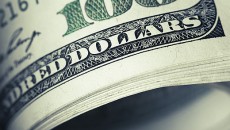GM IPOs Two Years After Receiving Bailout
After 2 years of receiving the $49.5 billion bailout by the U.S Government to avoid bankruptcy, General Motors (GM) is once again publicly traded on the New York Stock Exchange (NYSE). Over the past couple of years GM saw how its market share stumbled while foreign competitors like Toyota, Honda and Hyundai increased theirs through innovation and fuel efficient models.  Also, how its multiple brands like Hummer, Saturn and Daewoo had continuous returns below expectations. All of these in addition to the recession were some of the causes that left GM near bankruptcy.
Also, how its multiple brands like Hummer, Saturn and Daewoo had continuous returns below expectations. All of these in addition to the recession were some of the causes that left GM near bankruptcy.
Now, after considerably reducing costs by cutting some models of the mentioned brands and laying off employees, receiving a huge cash injection (the bailout money), and new management; GM is said to be back. After a very successful road show, GM was able to raise its price per share from $26-$28 to $33(around 20%). According to Reuters, these prices allowed GM to raise $63 billion and the underwriters still reserve the right to issue another $23.1 billion depending on demand. Most of the cash received by the IPO will go to the U.S Treasury that will reduce the stake it acquired with the bailout from 61% to around 31%.
This Thursday on its first day on the market, the stock opened at $35 per share, went as high as $35.99, and closed at $34.19 or 3.6% higher. The opening bell was ringed by Dan Akerson, GM CEO. Curiously enough, it was not a bell that opened the market; instead it was the sound of a Chevrolet Camaro that opened trading. Akerson who also did the first trade noted to CNBC that GM plans to produce more fuel-efficient cars which in his opinion will help the company regain some of the lost market share.
It remains to be seen what is going to happen with this 102 years old automobile company, but the position of the firm will be strongly evaluated by its new shareholders in the next quarter and the next year.
– Wellington Rodriguez
Ireland at Odds with EU and IMF over bailout
Over the last six months, it appeared that the market’s memory of the euro zone fragility had faded as the European Central Bank initiated a bond buying program. However, for the last two weeks fears of an Irish default have risen as large banks in the small island nation reported significant declines in deposits from clients and institutions. According to Bloomberg, Allied Irish Banks Plc, Irelands second largest bank, reported a 17% decline in deposits for the year. Ireland currently has over €25 billion of principle and interest payments to make over the next two years. Moreover, its debt-to-GDP ratio has skyrocketed to a five year high of 65.50%, surpassing the Maastricht Treaty’s requirements for sound fiscal management.
In response the Ireland’s fiscal issues, the IMF and the European Central Bank have stepped in to persuade Ireland to take a €50 billion bailout under certain terms and conditions. Ireland has opposed to bailout and is offering resistance, most likely to secure the best terms for its people. One of the points of contention between the two parties is Ireland’s low corporate tax rate. Ireland has chosen to maintain a rate of 12.5%, the lowest rate in the region. The parties pushing the bailout claim that a low tax rate has led to an artificially low amount of tax receipts; however, Ireland claims that without a low tax rate the small nation would be at a competitive disadvantage to attract capital and businesses. Irish bonds are currently trading at 5.2 bps above German bonds with a CDS trading at 505.67bps.
– Michael Alfaro
Article submitted by: Michael Alfaro and Wellington Rodriguez of the Capital Markets Lab (CML). To learn more about the Capital Markets Lab please visit https://business.fiu.edu/capital-markets-lab/.




